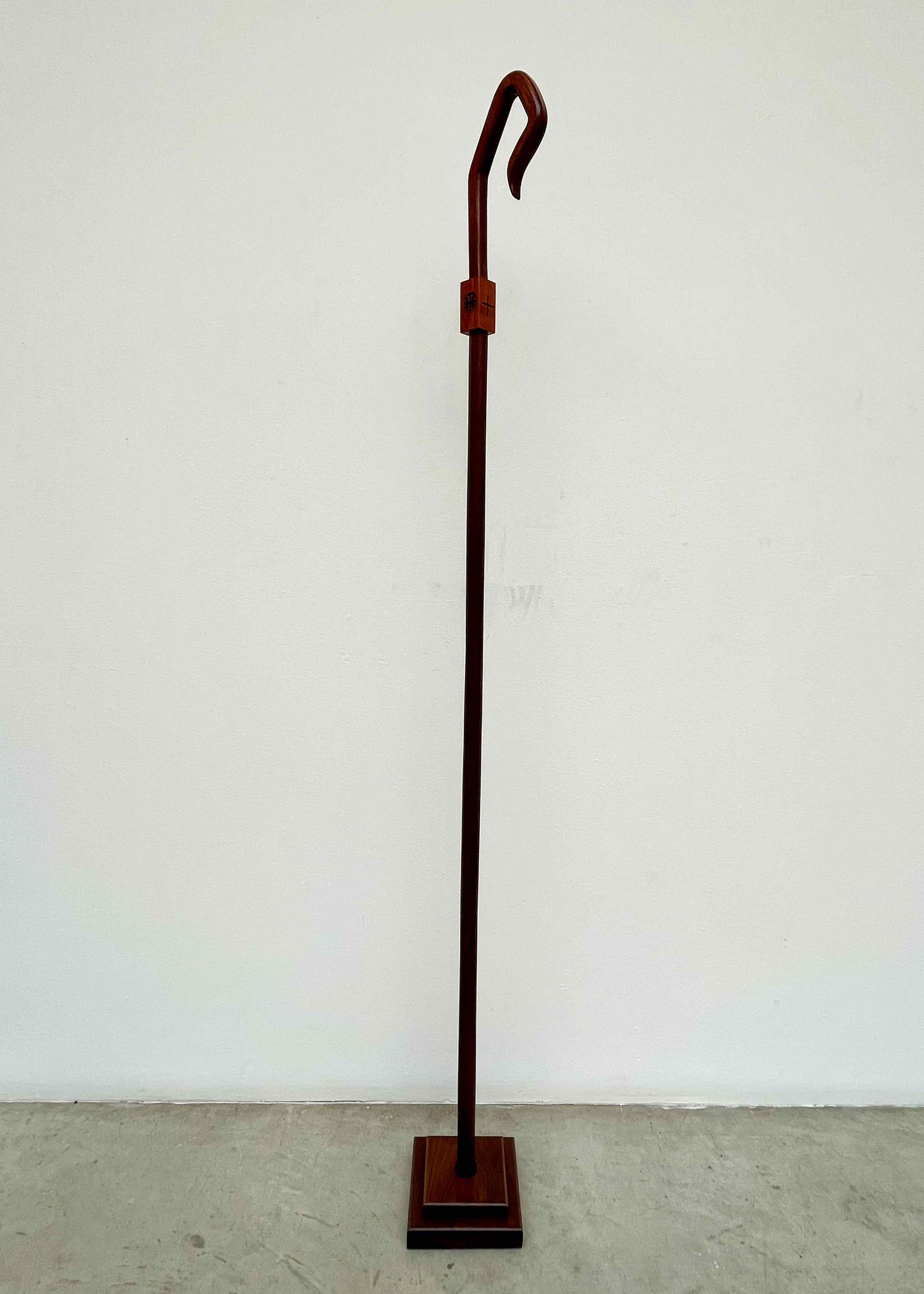By Hook or By Crook: Making an Abbot’s Staff
Fr. John Meoska, O.S.B., Woodworker and Crosier Craftsman
I heard the expression, by hook or by crook, many times growing up and even use the expression myself. “We’ll get this job done by hook or by crook” means we would do whatever was necessary to complete the task. But the expression can have a more ominous tone, also—suggesting that we’re even willing to do bad things to achieve our end.
The origins of the expression probably go back to Medieval England when the landed gentry allowed the peasants to take from trees whatever branches they could reach with their shepherd’s hook or crook and use them for firewood. Oliver Cromwell, who leveled many a monastery in Ireland in the mid-1600s, supposedly said he would have to conquer the Waterford area by “Hooke and by Crooke”; that is, by first taking the towns of Hooke Head and Crooke.
Shepherds. Monasteries. Hooks and crooks. At some time in the history of Western monasticism, abbots adopted the shepherd’s crook or staff as one of the signs (along with the mitre and ring) of the abbatial office. Typically, an abbot’s staff is referred to as a crosier (sometimes spelled “crozier”). The crosier symbolizes an abbot’s authority as the spiritual and canonical head of an abbey and his mission to govern and shepherd those under his care.
In June 2022 our confrere, Fr. Jonathan Licari, O.S.B, was elected Abbot President of the American-Cassinese Congregation. For the occasion of his abbatial blessing, Abbot Jonathan was presented with the ornate metal crosier of the late Archabbot Boniface Wimmer, O.S.B. Soon after, he asked me to make him a crosier of wood.
This crosier is made almost entirely of black walnut—my favorite wood—except for the node, which connects the crook with the staff proper. The node is of cherry. The design is my adaptation of a somewhat nontraditional crosier shape. I wanted something that was unique, simple, and yet beautiful in its very simplicity.
My intent was to make the crosier unique and personalized for Abbot Jonathan, yet not so specific so that a future abbot could not use it after Jonathan. To personalize it, I laser engraved the node front and back with the Saint John’s cross—a reminder of Abbot Jonathan’s roots as a monk of Saint John’s Abbey. The two sides of the node are engraved with the front and back of the Benedictine medallion—a reminder of his ministry within the wider Benedictine order, especially our American-Cassinese Congregation.













